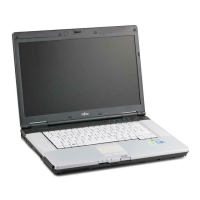Appendix
Note: Most of the information below comes from the Microsoft® page
"
http://windows.microsoft.com/en-us/windows-10/windows-10-recovery-options" .
Please refer to it for more details.
Create a Recovery Drive
A recovery drive can help you troubleshoot a nd fix problems with your PC, even if it won’t
start. To create one, all you need is a USB flash drive. Windows will inform you of t he
size the USB flash drive must be able to hold the required data.
1. From the taskbar, search for Create a recovery drive and the n select it. You might be
asked to enter an admin password or confi rm yo ur choice.
2. When the tool opens, mak
esureBackup system files to the recovery drive
is selected and then sel
ect Next.
3. Connect a USB drive to your PC, select it, and then select Next - Create.Alotoffiles
need to be copied to the recovery drive, so this might take a while.
4. When it’s don e, sele
ct Finish.
Note:
If you chose not to back up the system files when you created your recovery drive on
Windows 10, you wo n’t be able to use it to reinstall Windows.
Recovery options in Windows 10
If your PC isn’t running as quickly or reliably as it used to, try o ne of these recovery
options. The following table can help you decide which one to use.
Problem Try this
Your PC isn’t working well and you recently
installed an app, driver, or update.
Restore from a system restore point
Your PC isn’t
working well and it’s been a while
since you in
stalled anything new.
Reset your PC
Your PC won’t sta rt and you’ve created a
recovery drive.
Use a recov
ery drive to reinstall Windows
Your PC won’t start and you haven’t created a
recovery drive.
Use installation media to reinstall Windows
Restore from a system restore point
This option takes your PC back to an earlier point in time, called a system restore point. Restore
points are generated when you install a new app, driver, or Windows update, and when you
create a restore point manually. Restoring won’t affect your personal files, but it will remove
apps, drivers, and updates installed after the restore point was mad e.
1. Right-click (or pre ss and hold) the Start button, and then select Control Panel.
2. Search Control P anel for Recovery.
3. Select Recovery -Open S ystem Restore - N ex t.
4. Choose the restore point related to the problematic app, driver, or update,
and th en select Next -Finish.
Fujitsu 103

